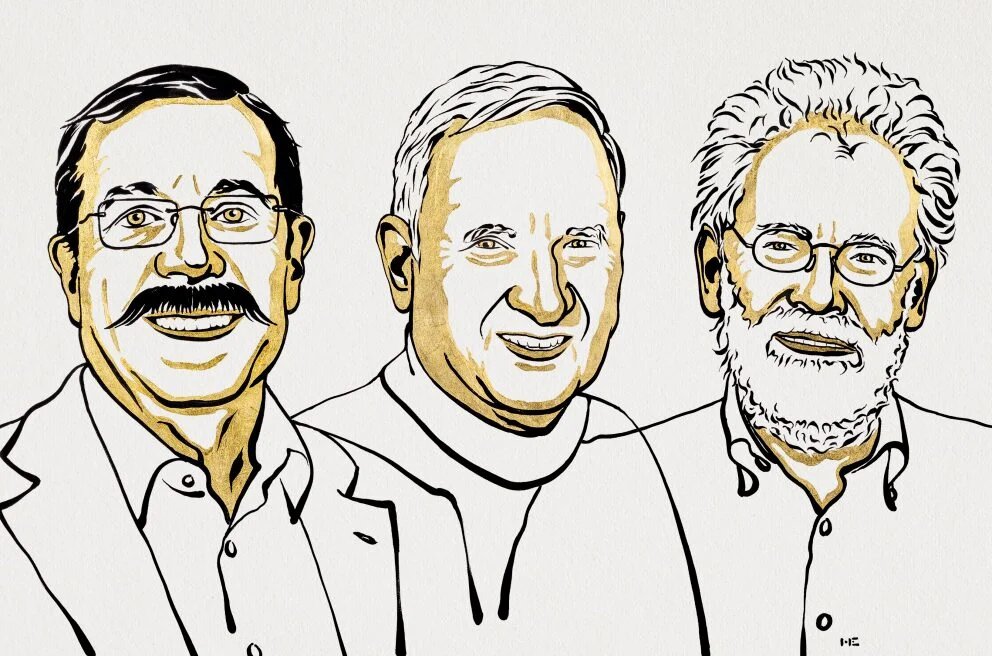The 2022 Nobel Prize winners in physics are Alain Aspect, John Clauser and Anton Zeilinger. Committee
Quantum mechanics allows two or moreparticles to exist in an entangled state. This means what happens to one of the particles in an entangled pair determines what happens to the other particle, even if they are far apart.
 Nobel Prize winners in physics. Image: Niklas Elmehed, Nobel Prize Outreach
Nobel Prize winners in physics. Image: Niklas Elmehed, Nobel Prize Outreach
In the 1960s, John Stuart Bell developeda mathematical inequality named after him that suggested that the correlation was because the particles in an entangled pair contained hidden variables, instructions telling them what result they should give in the experiment.
John Clauser, the first of the prize winners, developedideas of John Bell and conducted a practical experiment, which was supposed to confirm or disprove the hypothesis. When he took the measurements, they confirmed quantum mechanics, clearly violating Bell's inequality. This means that entanglement cannot be replaced by a hidden variable theory.
A small "loophole" suggesting the possibilityexchange of information (variables) between entangled particles at the time of emission, remained after the experiment of John Clauser. Alain Aspect, the second laureate, developed a setup to test this hypothesis. He was able to switch the measurement settings after the entangled pair had left its source, proving that the interactions that existed at the time they were emitted could not have affected the result.
Finally, the third winner - Anton Zeilinger -began to use entangled quantum states for practical problems. Among other things, his research group has demonstrated a phenomenon called quantum teleportation, which allows a quantum state to be moved from one particle to another over a distance.
Read more:
An asteroid with a diameter of half a kilometer approaches the Earth
Giant 'scar' on Earth's surface shown from space
It turned out what happens to the human brain after one hour in the forest
On the cover: Johan Jarnestad, The Royal Swedish Academy of Sciences